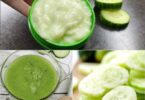The shiny side of aluminum foil can reflect heat better than the dull side, which can be beneficial when you want to retain heat. For example, if you are using aluminum foil to insulate food, wrapping it with the shiny side facing outward can help keep the food warmer for longer. Additionally, the shiny side can be helpful when you want to reflect heat back upwards, such as when broiling or grilling. However, it’s important to note that the difference in thermal reflectivity is minimal and won’t drastically impact cooking outcomes.
Optimal Situations for the Dull Side
The dull side of aluminum foil, while less reflective, is just as effective for most uses. If you need to reduce glare because of bright kitchen lighting or prefer a more subdued appearance, the dull side can be useful. When cooking items that may stick to the foil, some cooks prefer using the dull side, although both sides technically have the same non-stick properties. The matte finish can also be advantageous for tasks that require writing or labeling directly on the foil.
Myths and Misconceptions
A common myth is that the shiny side is for cooking, while the dull side is for wrapping or storing. Another misconception is that the shiny side should always face the food to reflect heat, which is not necessarily true. Science dispels these myths, revealing that both sides perform similarly. The primary difference lies in appearance, not functionality. Cooking enthusiasts often fall victim to these misconceptions, leading to unnecessary confusion.
Scientific Studies and Expert Opinions
Several scientific studies and experts have weighed in on the debate over the shiny and dull sides of aluminum foil. According to research, the heat reflectivity difference between the shiny side and the dull side is negligible, often less than 10%. Cooking experts and chefs generally agree that the choice of side is more about convenience and personal preference than it is about culinary technique. Authorities in material science confirm that the intended purpose of having two different sides is a byproduct of manufacturing, with no practical implications for most applications.
Practical Tips for Everyday Use
For day-to-day use, consider these practical tips: use the shiny side for insulating or retaining heat, although the difference is minimal; utilize the dull side if you prefer a non-reflective surface; feel free to write labels or notes on the dull side for organizational purposes; and when in doubt, remember that either side will work just as effectively for most tasks. For tasks like grilling, wrapping, or oven baking, you can use either side without affecting the outcome.
Conclusion
In summary, the shiny and dull sides of aluminum foil result from the manufacturing process, and the difference in appearance has little impact on their functional properties. While minor variations in heat reflectivity exist, they are not significant enough to influence most everyday cooking tasks. Ultimately, whether you choose the shiny side or dull side often comes down to personal preference and specific situational needs. Understanding this can simplify your kitchen routine and put to rest any myths or misconceptions about aluminum foil.
Download WordPress Themes FreeDownload Nulled WordPress ThemesFree Download WordPress ThemesDownload Premium WordPress Themes FreeZG93bmxvYWQgbHluZGEgY291cnNlIGZyZWU=download karbonn firmwareDownload WordPress Themes Free
ADVERTISEMENT






